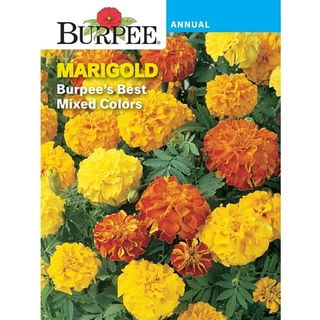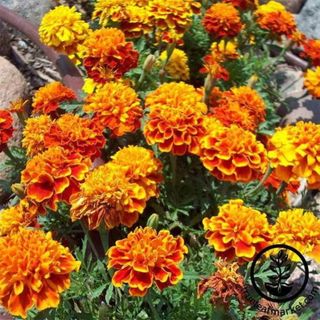Want the best homegrown tomatoes ever? Plant them with marigolds, says our grow-your-own expert, and discover why these two are a dream combination
Your tomato plants will be pest-free and covered in fruits
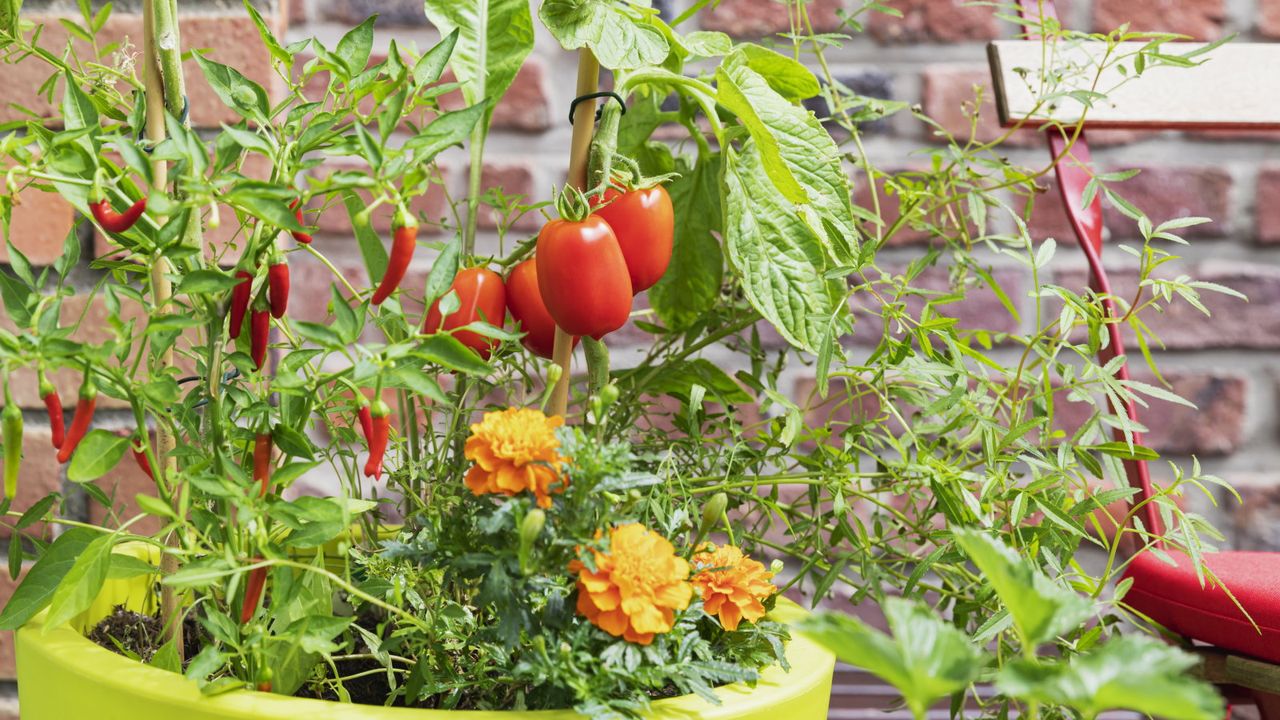
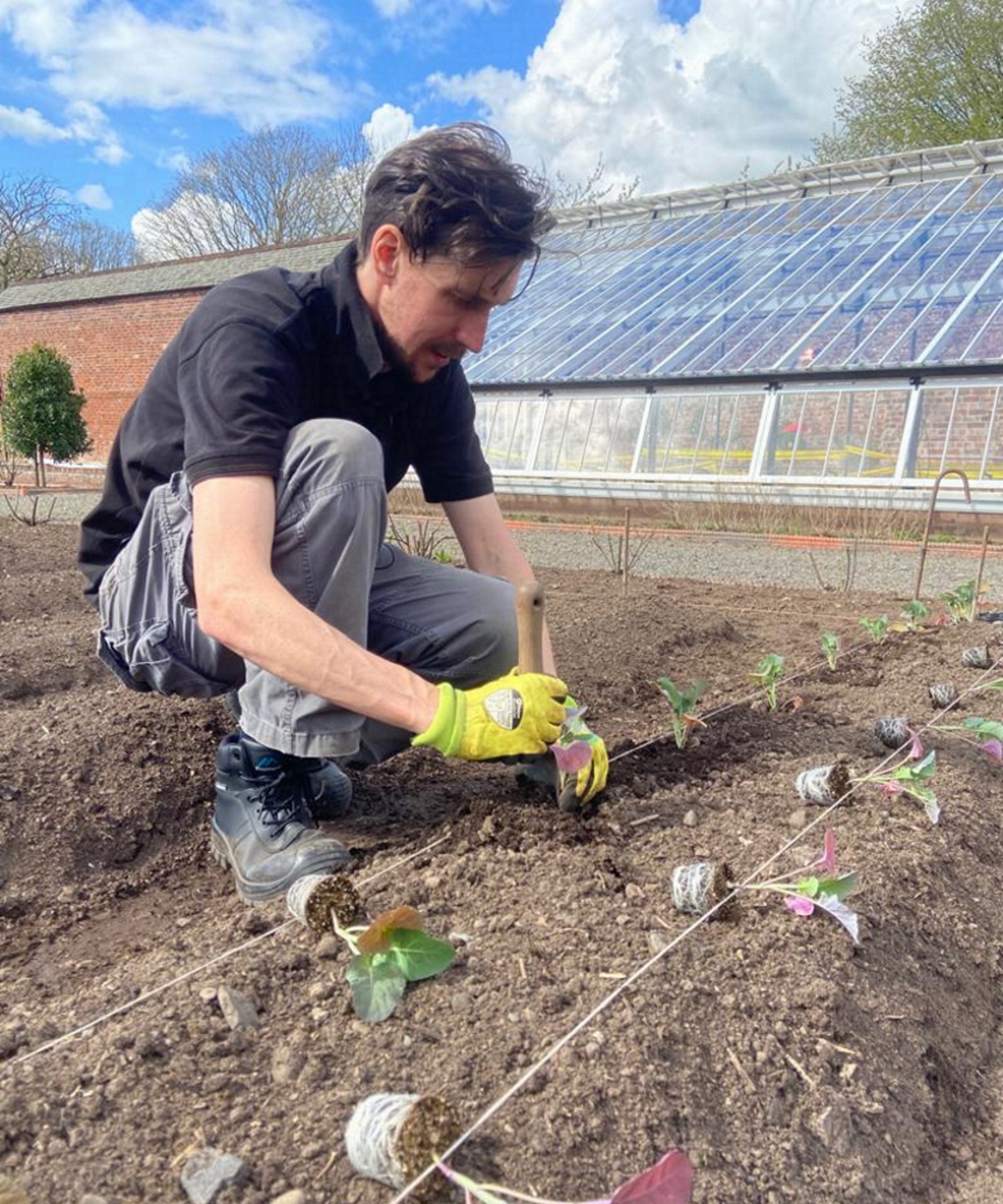
Marigolds are the best flowers to plant with your tomatoes. Not only are marigolds bright and bountiful, but they also offer multiple benefits to tomato plants. Let me explain why you should grow marigolds and tomatoes together.
Tomato companion planting is a natural way to have healthy, thriving plants and the best harvest possible. While basil has a top reputation as a plant to go with your tomatoes, you cannot go wrong by growing marigolds and tomatoes side by side. This is because marigolds repel many tomato pests, allowing your plants to grow stronger and healthier.
I have always planted marigolds as a companion plant for tomatoes. Whether as a kitchen gardener growing produce for restaurants, or just on my plot at home, why not reap the rewards of that beneficial relationship between marigolds and tomatoes? It is a proven technique of companion planting used by growers worldwide, so I take a deep dive into why you should grow marigolds and tomatoes together.

Tomato plants and marigolds - a proven duo
Companion planting offers a wealth of potential benefits when growing tomatoes. Whether you plant tomatoes outdoors in a vegetable garden or grow them indoors in a greenhouse, companion plants can keep your tomatoes healthy and produce a big crop.
Growing marigolds and tomatoes together - the benefits
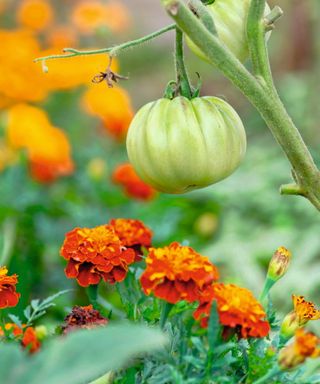
Why do marigolds and tomatoes work so well together? It comes down to the fact that they both revel in the same warm, sunny conditions, and marigolds keep bugs away that would otherwise attack tomatoes.
Firstly, marigolds grow happily in warm locations where they can get at least six hours of sunlight daily. It mirrors the growing conditions that tomatoes love, both indoors and outdoors.
It is their proven ability to repel a host of typical tomato pests which makes marigolds the perfect plants to pair with your tomatoes. Marigolds emit a strong scent that repels lots of pests, including aphids, whiteflies, thrips, and tomato hornworms.
It is not just above ground where they offer a helping hand. Marigolds also emit chemicals from their roots that can deter root-knot nematodes in the soil. These tiny soil-dwelling pests can feed off the roots, robbing nutrients and stunting the plant’s growth.
Finally, marigolds attract beneficial insects and pollinators, including bees and ladybugs. More of these insects means pollinated flowers and a bountiful tomato harvest. Attracting lots of ladybugs is also helpful, as they eat aphids.
How to plant marigolds and tomatoes
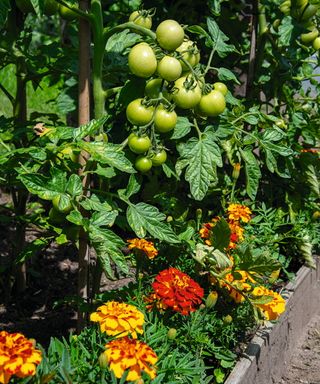
If you want to grow marigolds from seed or buy plants to utilize their power as a companion for tomatoes, it is key to select the best varieties.
French marigolds (Tagetes patula) have the strongest, pungent aroma and are best for companion planting. French marigolds come in bright colors, including red, orange, and yellow, and are some of the easiest flowers to grow from seed.
Plant marigolds in a vegetable garden 12-18 inches from your tomato plants. Small groups of marigolds close to your outdoor tomatoes will offer all the benefits of companion plants and are simple to keep hydrated when you water the tomato plants during the summer.
An alternative is to plant a ring of marigolds around tomato plants, keeping them at least 12 inches away from the tomato plant and each other. If you grow tomatoes in raised beds or in-ground beds inside a greenhouse, you can also plant marigolds 12-18 inches away in groups or as a perimeter, depending on the bed size.
When you grow tomatoes in pots, marigolds can be planted in the same container or grown in separate pots nearby. A large pot is required to give sufficient space for both plants to develop if you pair them up. Whereas, when planning my greenhouse, I always opted to have pots of marigolds spaced around my tomato plants.
Keep the pots close by, still under 18 inches away from the tomato plants, as it gives both plants room to develop to full size and makes it easy to water and feed them throughout the growing season.
The smell of the marigolds nearby will keep all those pests away, and the pollinators attracted to the marigolds don’t have far to travel to get to the tomato flowers and pollinate them.
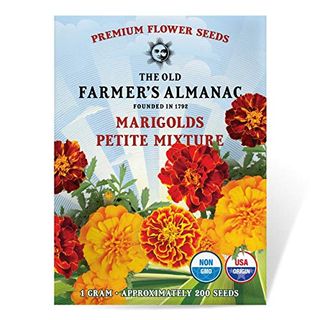
Petite Mixture is a dwarf marigold that reaches up to eight inches tall and gets covered in yellow, red, and orange flowers.
FAQs
Can I plant marigolds next to cucumbers?
Marigolds are also beneficial for cucumber companion planting. When growing cucumbers, having marigolds nearby helps to repel pests, including cucumber beetle, and attract pollinators to help you get lots of fruits.
Can you plant marigolds next to vegetables?
Marigolds can make excellent companion plants for many vegetables, due to their strong scent that repels pests. The list of vegetables they can benefit from includes carrots, potatoes, onions, beans, carrots, cabbage, and lettuce.
Another top flower for companion planting is nasturtiums. When you grow nasturtium in a vegetable garden, the plants produce a strong scent that repels some pests and attracts predatory insects to eat aphids, beetles, and more.
Sign up to the Homes & Gardens newsletter
Design expertise in your inbox – from inspiring decorating ideas and beautiful celebrity homes to practical gardening advice and shopping round-ups.

Drew’s passion for gardening started with growing vegetables and salad in raised beds in a small urban terrace garden. He has worked as a professional gardener in historic gardens and specialises in growing vegetables, fruit, herbs, and cut flowers as a kitchen gardener. That passion for growing extends to being an allotmenteer, garden blogger, and producing how-to gardening guides for websites. Drew was shortlisted for the New Talent of the Year award at the 2023 Garden Media Guild Awards.
You must confirm your public display name before commenting
Please logout and then login again, you will then be prompted to enter your display name.
-
 5 low-energy and useful tasks to try instead of doom-scrolling – this brain hack will break bad habits
5 low-energy and useful tasks to try instead of doom-scrolling – this brain hack will break bad habitsExperts urge you to try it for your wellbeing
By Chiana Dickson Published
-
 How to store a comforter or duvet properly over the warmer months – pros say 'breathable is the buzzword'
How to store a comforter or duvet properly over the warmer months – pros say 'breathable is the buzzword'Clean, air out, fold and roll your way to a fresh and fluffy duvet
By Ottilie Blackhall Published
-
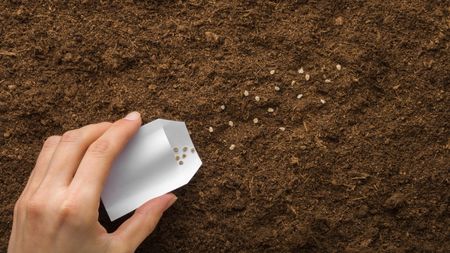 Direct sowing vs transplanting – our grow-your-own expert advises which is best, and shares 5 veggies you should always sow directly
Direct sowing vs transplanting – our grow-your-own expert advises which is best, and shares 5 veggies you should always sow directlyBoth approaches to sowing vegetables have pros and cons
By Drew Swainston Published
-
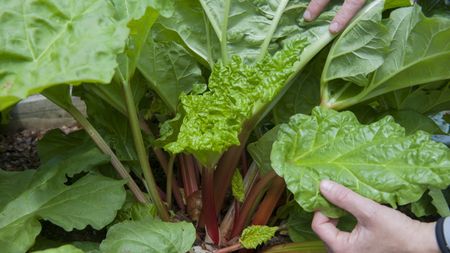 I grew rhubarb from seed for years – here’s exactly how to do it for guaranteed germination and healthy crops of fruit
I grew rhubarb from seed for years – here’s exactly how to do it for guaranteed germination and healthy crops of fruitGrowing rhubarb from seed is a cost-effective way to propagate plants, but it requires care and patience
By Drew Swainston Published
-
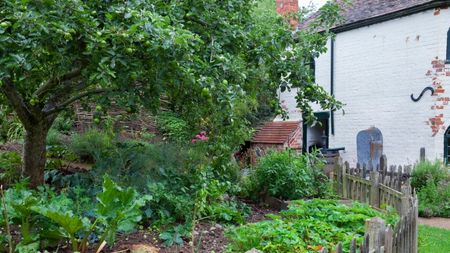 4 reasons you should plant trees in a vegetable garden – plus experts reveal the secrets to help you reap the rewards
4 reasons you should plant trees in a vegetable garden – plus experts reveal the secrets to help you reap the rewardsSee how agroforestry principles can help boost your soil and harvests
By Drew Swainston Published
-
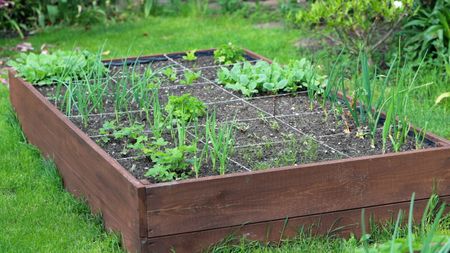 9 of the best vegetables to grow using the square foot gardening method – for big harvests in small spaces
9 of the best vegetables to grow using the square foot gardening method – for big harvests in small spacesPlus how many of each vegetable can be grown per square foot
By Drew Swainston Published
-
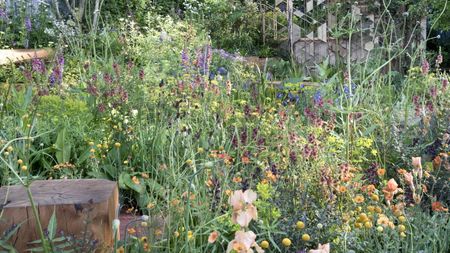 What are beneficial nematodes? Plus how to use these microscopic organisms to combat common garden pests
What are beneficial nematodes? Plus how to use these microscopic organisms to combat common garden pestsSuitable for organic gardening and safe to use – beneficial nematodes are small but powerful
By Drew Swainston Published
-
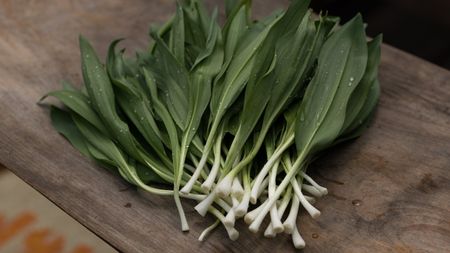 Ramps are highly prized spring harvests for chefs – discover how to grow your own at home from bulbs or seeds to have rich pickings for years to come
Ramps are highly prized spring harvests for chefs – discover how to grow your own at home from bulbs or seeds to have rich pickings for years to comeGrowing ramps, or wild leeks, does require patience, but the rewards are worth the wait
By Drew Swainston Published
-
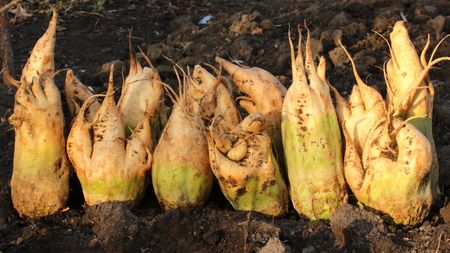 How to grow mangelwurzel – for a versatile and wondrous multi-purpose historic vegetable
How to grow mangelwurzel – for a versatile and wondrous multi-purpose historic vegetableThis easy-to-grow and incredibly productive crop may become your favorite new vegetable
By Drew Swainston Published
-
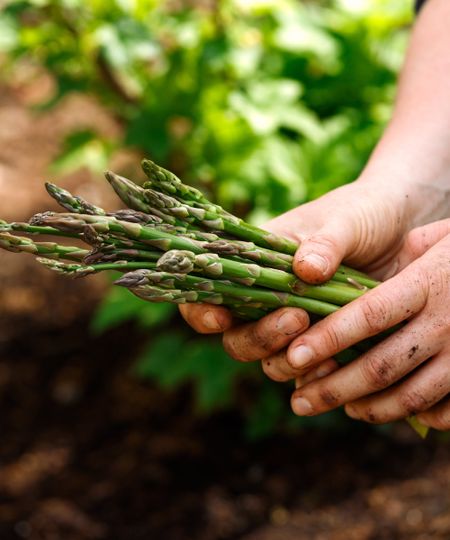 Asparagus companion planting – 7 of the best beneficial pairings, and some of the worst to avoid causing damage to your crop
Asparagus companion planting – 7 of the best beneficial pairings, and some of the worst to avoid causing damage to your cropSee what to plant with asparagus, and what should be avoided
By Drew Swainston Published
